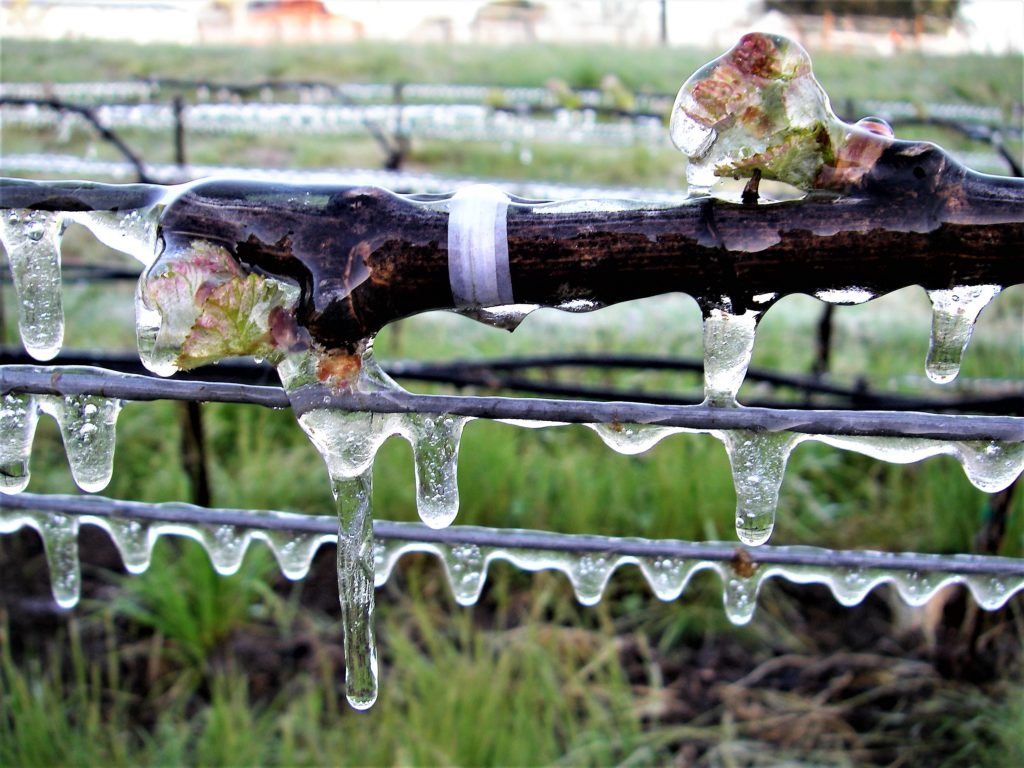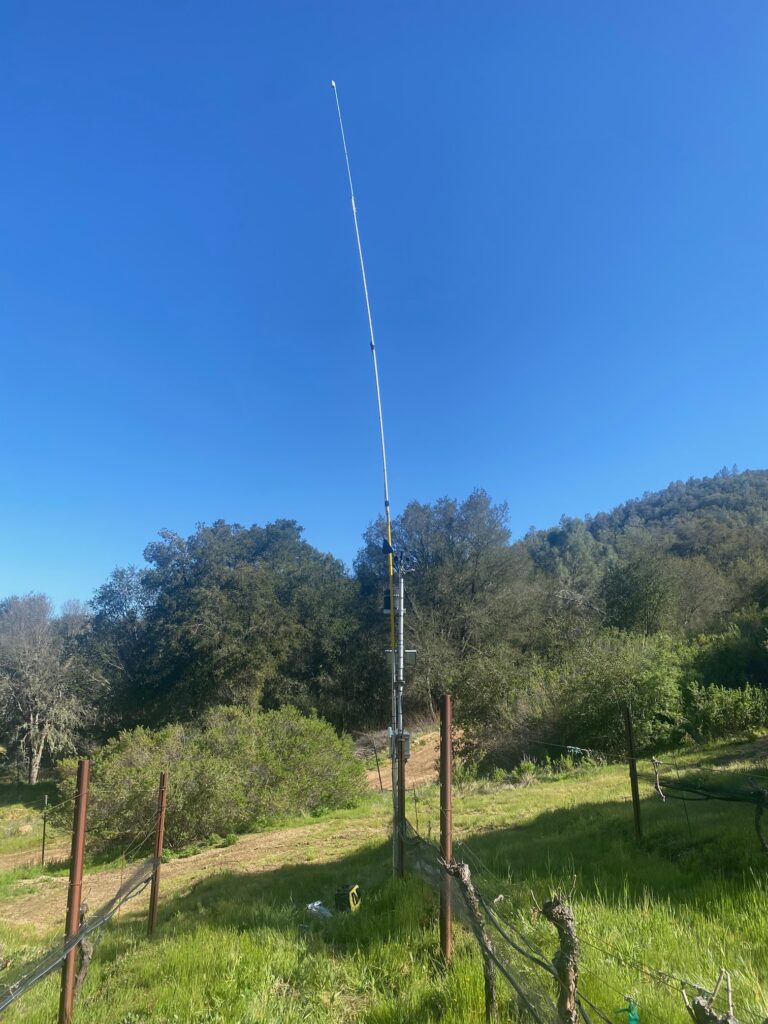How can I find out?
Despite the deluge we Californians got this winter and early spring, we’re not out of the drought. Many of the state’s groundwater basins are still overdrafted, some by a lot. The reason we’re in dire straits right now is because of agriculture. There are not enough low-flow toilets in the world to offset the water requirements of the Central Valley. Most of that demand is irrigation-related and that seems to be the focus of water-savings measures. I know we at AV certainly hang our hat on it. But there’s an elephant in the room…
Its name is frost protection. Now frost protection can get hairy because if you mess it up, you can lose an entire season’s crop. Anybody remember 2022? Over-head sprinklers are also really good at preventing frost-related damage. Even microsprinklers have their limitations. If you get super low temperatures, that water can freeze inside the emitter and render them useless. Hard water can also clog microsprinklers just as they would a standard irrigation emitter, but with more serious consequences.
I’ve written about the use of water for frost mitigation before. In some cases, you don’t have a choice. Overhead rotary impact sprinklers do, however, use a ton of water. Maybe early in the season you have water to spare, but sooner or later, you’re going to pay for it…literally. By the end of this decade, we can expect SGMA to take effect statewide. In most places that means there will be a price tag for every gallon you take out of the ground.

Getting to the point: wind
There are two kinds of frost: inversion and advection. If you have the latter, water is your only defense (unless you’re in a part of the world that still allows smudge pots). Inversion frosts, however, can be combatted with a wind machine in many but not all cases.
Inversion refers to the temperature gradient that exists between the top of a hill and the bottom. If you notice that frost seems to affect only the low parts of your vineyard, you probably have an inversion frost. Wind machines work by churning up the warm air up high with the cold air down below. The bigger the difference between the temperature at ground level verses at 30-ish feet up high, the better your fan will work.

How do you know if wind is right for you?
Mark Battany of the UCANR here in the Central Coast has done considerable work on frost. If you’re in this neck of the woods, you may have seen one of his tall towers flopping around in the middle of the vineyard. Those are used to measure the temperature inversion (if any) and determine if a frost fan is right for you. Battany’s definition for a “useful inversion” i.e. one for which frost fans can be used to effectively protect against frost damage, is a difference of at least 2° Fahrenheit between temperatures at 5 feet and 35 feet.
You can read Mark Battany’s full article here.
Build your very own
You can hook the temperature sensors to a fancy telemetry node (let me know if you want to do this). This will give you real time data on the inversion for individual frost events. You can also build one of these things with downloadable HOBO sensors for around $100. If you think wind may work in your vineyard, there’s no excuse to not have an inversion tower.
You can find his detailed instructions here.
Conclusion
If you’re dialing in your water use for irrigation, you shouldn’t ignore the amount of water you use for frost protection. Understanding how temperature fluctuates in your vineyard can help you make better decisions about where to invest and how to use your equipment.


